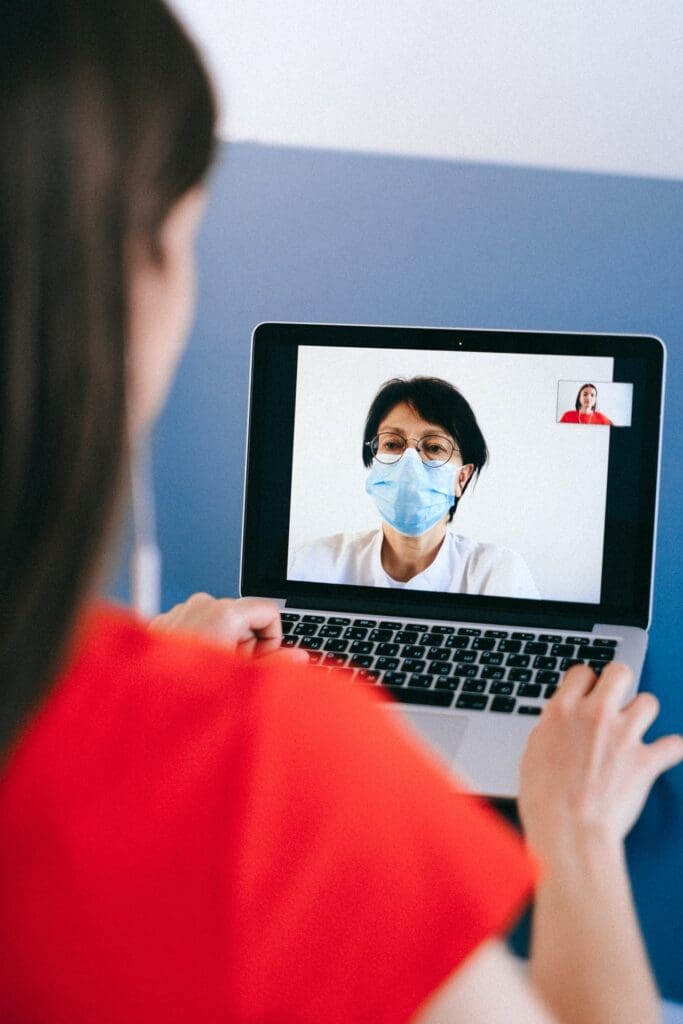There is no such thing as a typical year for medical science and the healthcare industry. Medicine is anything but stagnant, and there will always be space for something new and mind-blowing, even though the healthcare industry took a setback due to the pandemic. At the same time, it also catalyzed bringing astonishing healthcare innovation ideas to fruition.
Because of the pandemic, we saw massive growth in telehealth services such as video telemedicine, which unintentionally accelerated the innovation process to bring more technological advancements into the healthcare field. It is undeniable that healthcare at home and the invention of tools to reduce the time for diagnosis and treatment is the focus of healthcare advancement. Cybernet’s CyberMed Rx, a rugged medical tablet designed for healthcare environments, exemplifies such technological advancements, offering durability and integrated features for medical professionals.
However, we are observing a new wave of innovation in the healthcare field and the following are the reason why.
Table of Contents
1. The shift to EHR systems:
A big chunk of innovation in healthcare is dedicated to shifting the field toward automating processes and digital records. Electronic health record systems, or EHR for short, have evolved to provide not only doctors but other healthcare staff a way to quickly and effectively update and manage patients’ records. With other systems now in the works to provide patients with the same access to their records, hopefully saving them a phone call to order their repeat prescriptions or review their test results.
That is why a digital version of people’s health records is the new wave in the healthcare industry because the interoperability of this system will ensure that information is never lost and is put to good use.
Imagine how easier it would be for healthcare professionals to provide improved quality of care by having easy access to patient’s complete medical history and optimizing the entire procedure. Nurses who usually fall victim to log in every information manually can save time by focusing on other aspects of their career, such as continuing education.
Online schooling allows them to enroll in prestigious mph online programs and other similar courses, resulting in increased efficiency, better patient outcomes, and care quality. In addition, digitalization and automation will allow patients to have access to their EHR and test results without visiting the medical facility.
2. Use of Virtual and Augmented Reality:
Both AR and VR are changing the face of healthcare for the better. At the surface, it may seem that exceptional patient care and availability of advanced tools are the departments according to which we measure the healthcare industry’s progress.
However, what indeed contributes to a better medical experience are competent professionals. Virtual reality is changing the game to help train doctors, especially surgeons, with a very immersive experience.
According to a study published by Harvard Business Review, surgeons who had VR training had a 230 percent boost in performance compared to their counterparts who didn’t.
Not only VR but augmented reality is also playing a vital role in medicine’s bright future. AR technology uses a real-world setting compared to its peer VR, which creates an entirely virtual environment for AR.
With AR, students and other healthcare professionals can study anatomy without needing human bodies with immense accuracy and detail. All in all, AR and VR are a promising technology for both patients and doctors.

3. Medical tricorder for unified diagnostics:
What’s the most annoying thing about visiting the doctor? The wait. That’s right, the wait to see the doctor, the wait to get results for various tests only to know that you’ll need more, and the wait to know what’s exactly wrong with you.
Well, all that can change with the help of a device called a medical tricorder. It is an instant solution, especially for doctors; the tricorder can diagnose almost every disease without ordering too many tests.
The device we are talking about is a portable handheld gadget used to take basic vitals within seconds and diagnose other medical conditions.
Remember, it’s not precisely the device the crew from Star Trek used to gather instant medical data on a patient. But technology has advanced enough to come up with devices like BioSticker and Viatom CheckMe Pro.
The former is a tiny and thin device from BioIntelliSense that can measure various parameters such as skin temperature, respiratory rate, activity levels, heart rate, body position, and more.
The latter is a palm-sized gadget that can measure blood pressure, ECG, oxygen saturation, heart rate, and more.
4. Nanotechnology:
Tony Stark isn’t the only one who can flaunt his excellent nanotech suit because we are also entering the nanomedicine age in the real world. The technology has been tapped into since 2014 where researchers focused on using nanoparticles for cancer treatment tools and drug delivery systems.
The technology now is so refined that MIT researchers back in 2018 created a wirelessly controlled electronic pill that can release drugs or relay diagnostic information in response to smartphone commands.
The most far-fetched concept in nanomedicine is the prospect of developing nano-surgeons, and it is not a general idea anymore. We can tap into improved material cell interaction and imaging, drug delivery systems, and cell engineering with nanotechnology.
The recent leap in the technology is the release of intelligent patches demonstrated by a France-based company Grapheal at CES 2020. Not only can you have continuous monitoring of the wound with the help of the smart patch, but the graphene core can also stimulate wound healing.
Conclusion:
Evolution and innovation are a necessity when it comes to the world of healthcare and medicine. We live in a century where we witness astounding breakthroughs in medical science in surgical procedures, diagnostic procedures, and more.
Technologies like wearable medical devices and tricorders save time between diagnosis and treatment with the most negligible chances of human error. These are genuinely revolutionizing times with mind-boggling innovations in healthcare, from digitalization to nanotech.
Featured Image by PublicDomainPictures on Pixabay




